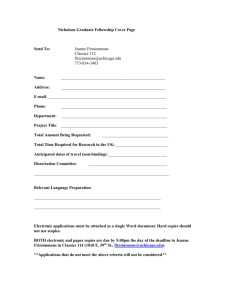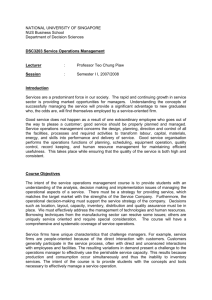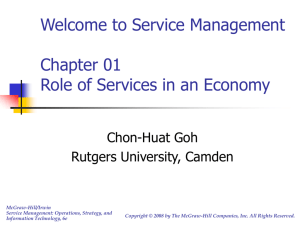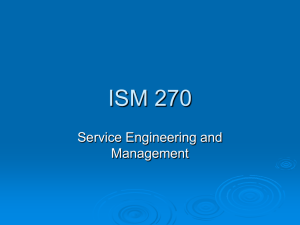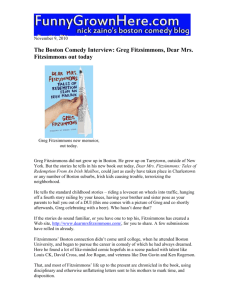Provost's Conference Room
advertisement
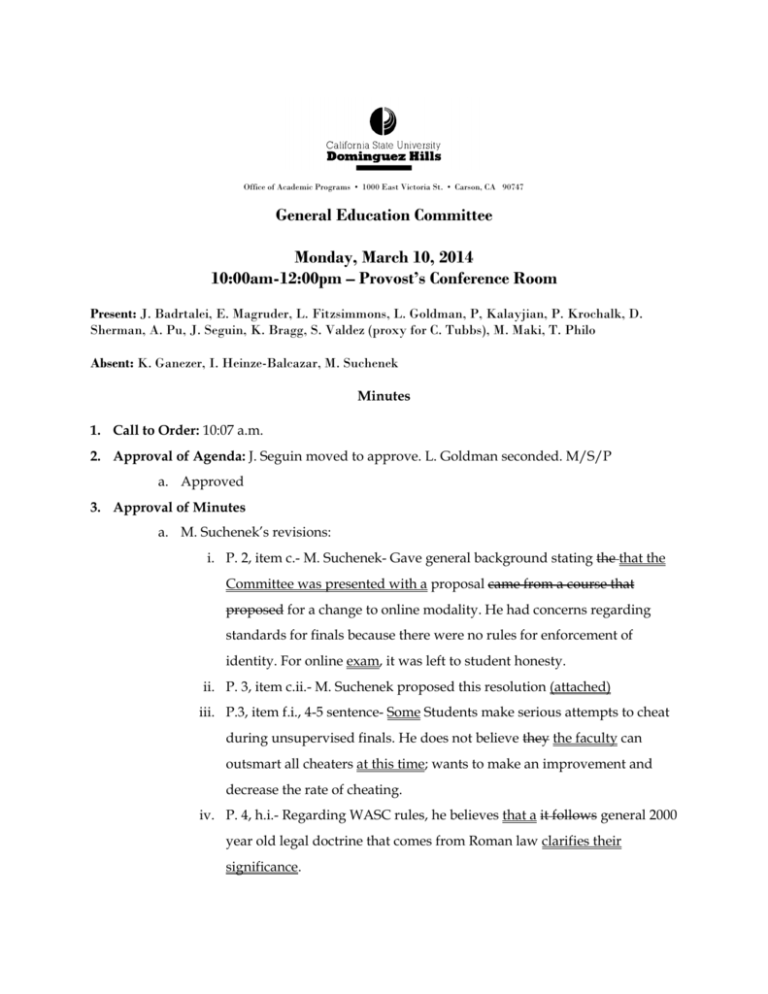
Office of Academic Programs • 1000 East Victoria St. • Carson, CA 90747 General Education Committee Monday, March 10, 2014 10:00am-12:00pm – Provost’s Conference Room Present: J. Badrtalei, E. Magruder, L. Fitzsimmons, L. Goldman, P, Kalayjian, P. Krochalk, D. Sherman, A. Pu, J. Seguin, K. Bragg, S. Valdez (proxy for C. Tubbs), M. Maki, T. Philo Absent: K. Ganezer, I. Heinze-Balcazar, M. Suchenek Minutes 1. Call to Order: 10:07 a.m. 2. Approval of Agenda: J. Seguin moved to approve. L. Goldman seconded. M/S/P a. Approved 3. Approval of Minutes a. M. Suchenek’s revisions: i. P. 2, item c.- M. Suchenek- Gave general background stating the that the Committee was presented with a proposal came from a course that proposed for a change to online modality. He had concerns regarding standards for finals because there were no rules for enforcement of identity. For online exam, it was left to student honesty. ii. P. 3, item c.ii.- M. Suchenek proposed this resolution (attached) iii. P.3, item f.i., 4-5 sentence- Some Students make serious attempts to cheat during unsupervised finals. He does not believe they the faculty can outsmart all cheaters at this time; wants to make an improvement and decrease the rate of cheating. iv. P. 4, h.i.- Regarding WASC rules, he believes that a it follows general 2000 year old legal doctrine that comes from Roman law clarifies their significance. b. L. Fitzsimmons- p. 6, item s. 2nd sentence- Reword sentence for clarity. “…but return focus to the decision reached by the subcommittee in 2011…” c. L. Fitzsimmons- p. 10, item f.i. Revise to state, “L. Fitzsimmons stated that such a checklist does exist and that the departments receive the checklist…” Old Business 1. GE Area Review Update a. ANT 101 and REC 100- The subcommittees were not prepared to give a report at the time. Committee members did not have the course portfolios for review. M. Medina will provide subcommittee members with the course portfolio materials. b. PHI 120- J. Seguin volunteered to be the second reviewer with L. Fitzsimmons as the original member (D. Best) is no longer on the GE committee. c. Chemistry- L. Goldman stated she is on the subcommittee with K. Ganezer to review Chemistry 102. Minimal information, only syllabi and notes, were submitted for the portfolio in October. No student materials were submitted. They contacted department chair A. Pu but have not received any further materials. i. L. Fitzsimmons informed the committee that A. Pu took over developing the portfolio for a colleague who was ill and there may be a possibility she did not receive some materials that were collected by the original person. She will contact A. Pu and follow up on the status of the course materials. d. P. Kalayjian and P. Krochalk requested to work with a hard copy of the ANT 101 course portfolio. M. Medina will provide them with the copy. e. L. Fitzsimmons asked for a follow-up on the Chicana/o Studies assessment report. i. E. Magruder- The Chicana/o Studies assessment sites one course as a model for GE offerings. Her suggestion in the report was that the department support that statement with specifics and also state their plan for other courses to follow their model course. New Business 1. LBR 200- Preliminary Review a. L. Fitzsimmons- Commented that the course description seems a bit vague and could be made a bit more specific by explicitly stating the era such as “contemporary.” Also, the course did not meet the recommendations for linking the course and GE learning outcomes. b. E. Magruder asked if the recommendation had been made for the department chair to meet with Cathy Jacobs regarding learning outcomes. She suggested this be addressed later, before they go to UCC. UCC adheres to the verbs of Bloom’s taxonomy. i. L. Fitzsimmons- No, the recommendation to meet with C. Jacobs had not been made yet. It was her understanding that Bloom’s taxonomy had been marginalized. ii. P. Kalayjian commented that Bloom’s taxonomy had been revised and updated. iii. L. Fitzsimmons requested K. Bragg forward the revised Bloom’s taxonomy documents/information to the committee so that it can be circulated since it is a university-wide application. c. P. Kalayjian- Commented that there is random formatting in the citations of the Required Reading (bold, italics, quotation marks). She recommended the citations are corrected and made consistent. d. L. Fitzsimmons - Recommended item #7 of the Computer Information Literacy Statement regarding plagiarism be revised. The statement should include a clarification of “…quote in addition to paraphrasing without plagiarizing.” Proper documentation is required for both. e. Course Schedule- There should be consistency in the reading assignments. Some reading assignments have page numbers and some do not. This may be confusing for students. f. E. Magruder- Asked for clarification, because it is not specified in the catalog if an Area D2 course has to meet all 7 of the learning outcomes. In the catalog it states, Area C Humanities courses must, “Meet one or more goals” and other Area statements do not specify. She believes it would be helpful to reexamine the wording in the catalog for clarity and consistency. i. She commented that 7 learning outcomes is a lot for one course to satisfy. It appears the course attempts to meet all of the outcomes, but some are more applicable to others based on the subject matter. ii. L. Fitzsimmons- Stated that there usually is some flexibility. g. M. Maki- E. Magruder brings up a larger issue of assessing numerous outcomes which has come up before. He agreed the issue of consistency needs to be addressed for all areas. 2. LBR 200- Vivian Price a. V. Price- The department is proposing LBR 200 Labor and the Environment as a lower division GE course based on the recommendation of their program’s external reviewer. The class was developed to do outreach to lower division students and also appeal to an interest in the environment by addressing some of the Area D goals, as well as, introduce students to the major. i. She worked to fulfill the GE guidelines and requirements and tried to find a way to develop the class around the GE goals. b. V. Price gave an overview of the course student learning outcomes and how they are met. i. #1- For “historical change in cultural processes” she adapted the idea of the affects and issues of the relationship of labor and the environment and how work and climate change affect society in the U.S. and internationally. ii. #2- The course looks at the issue of how sciences deal with the human past and how test hypotheses are formulated. Readings are included which address the issue of the scientific method and of how work will evolve in the future. Different readings address different parts of the world including U.S., Canada, and China. iii. International governments and worker’s organizations- The course reviews the relationship of elected bodies, labor unions and workers centers and what they are doing to respond to climate change. iv. Global interdependence among people- The readings show that no country is alone and how workers respond to the issue of global warming, creating rights and policies for health and safety. The readings also show how work in other countries affects the U.S. and how agriculture or other labor intensive industries are affected. v. She tried to include measurable goals and how to test the student learning outcomes. c. P. Krochalk- Commented that the statement by the program’s external reviewer recommending this type of course to highlight the program is not necessary to approve the GE course which is very strong on its own. i. V. Price- Stated she has to acknowledge that the external review is what compelled her to create the labor and environment class, not a labor class only. d. J. Badrtalei- Questioned how the department will evaluate learning outcomes for assessment. For example, #2. i. P. Krochalk- Agreed that some of the learning outcomes may be difficult to assess as currently stated. e. L. Fitzsimmons- Recommended that the GE learning outcomes be added to the course syllabus and be linked to the course learning outcomes to make them clearer for students and for assessment. i. E. Magruder- Commented that for course assessment, the current course outcomes need to be translated into action. The course outcomes need to be more specific and stated in measurable terms. f. K. Bragg- Recommended using a 3-column chart: 1- GE learning outcomes, 2- course learning outcomes, and 3- course assignments that meet the outcomes. This will help link the outcomes and streamline the course for assessment. g. L. Fitzsimmons- Recommended the time frame be specified in the course description. For example, “contemporary.” h. There are several concerns of inconsistency with formatting (bold, italics) in the syllabus. The committee recommended to make format consistent throughout the document. To help with consistency, the committee recommended to list pages for each reading assignments in course schedule. i. L. Fitzsimmons will send V. Price all of the committee’s recommendations for reference. j. L. Fitzsimmons- Informed the committee there are 3 options: accept the course as is; to accept with contingency of recommendations; or to resubmit. k. P. Kalayjian moved to accept LBR 200 conditionally for resubmission. P. Krochalk second. M/S/P i. Approved for resubmission Open Forum 1. P. Krochalk- Asked if there is there a time frame for when the subcommittees are supposed to respond to course proposals. a. L. Fitzsimmons- her proposal was given a time frame which has been exceeded so she will inquire with I. Heinze-Balcazar Adjourn: 10:57am
